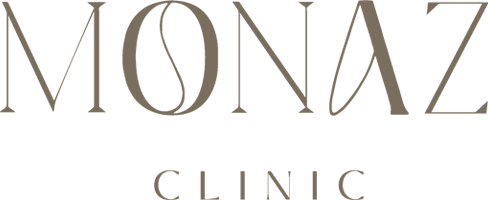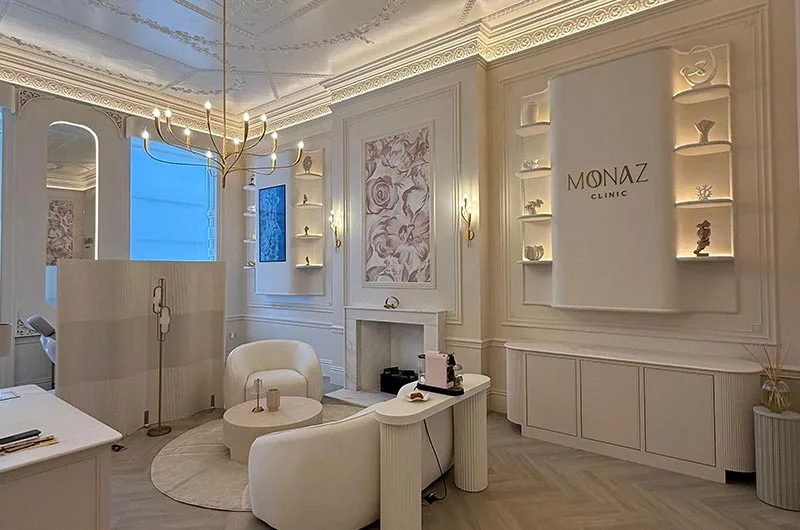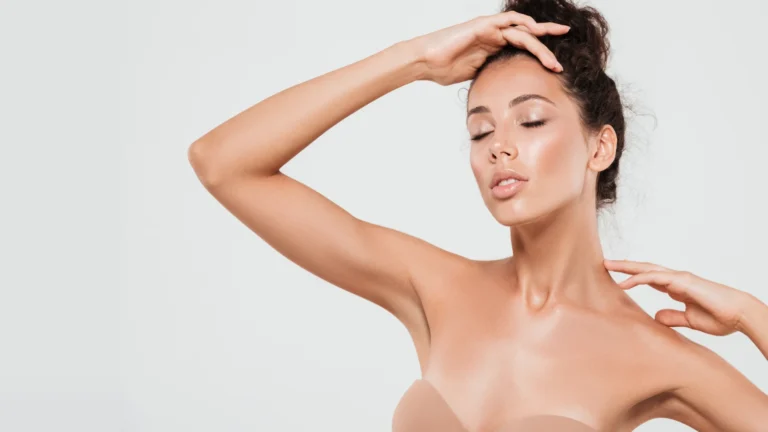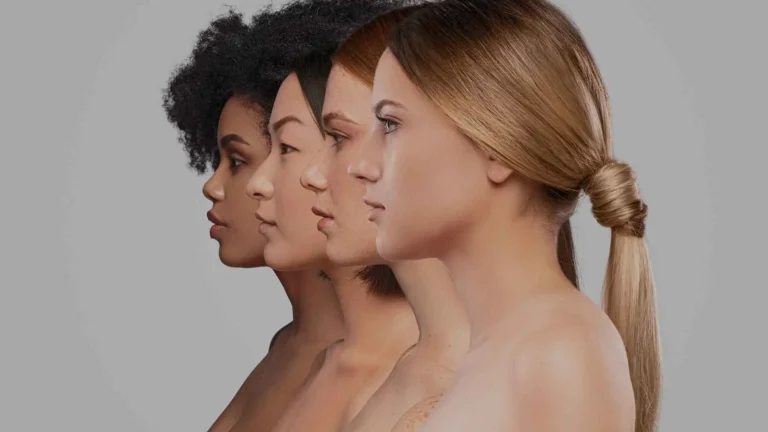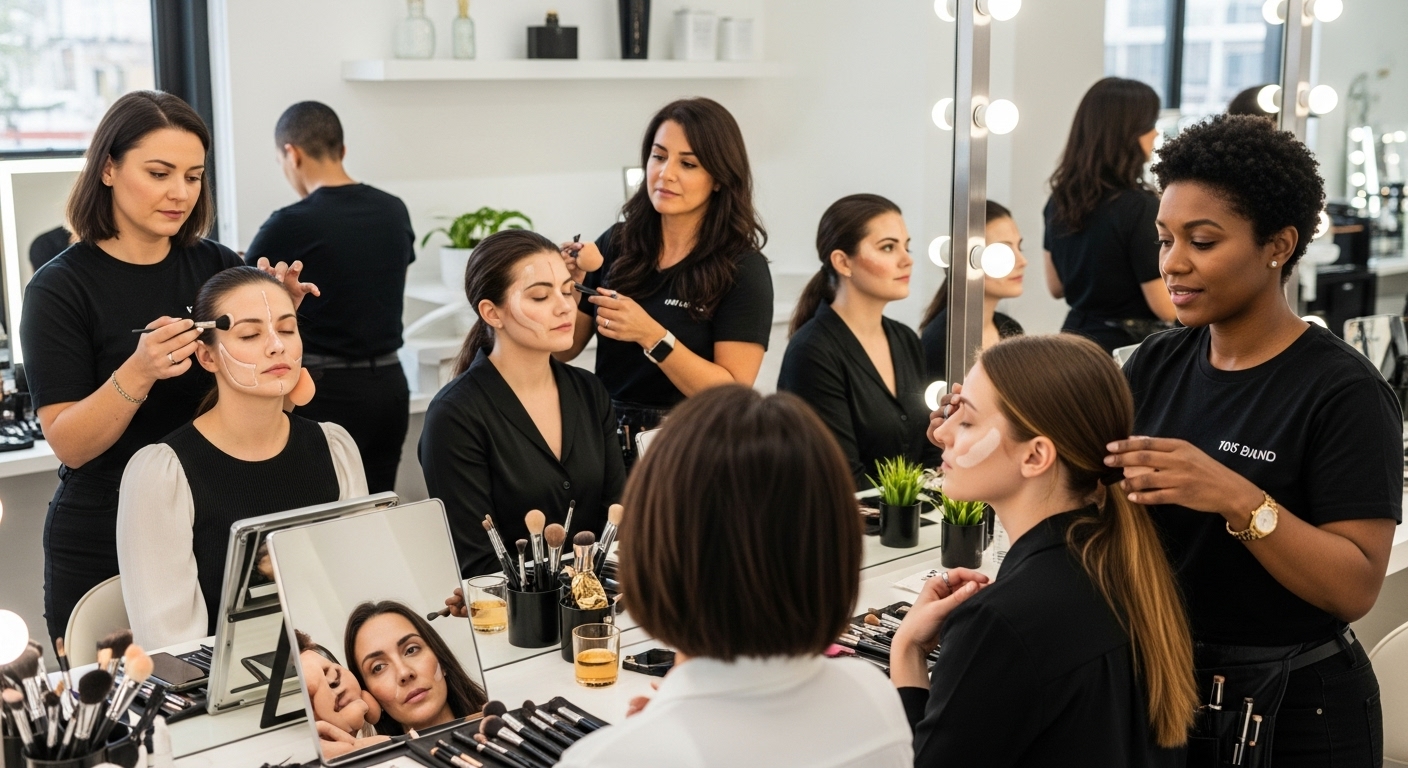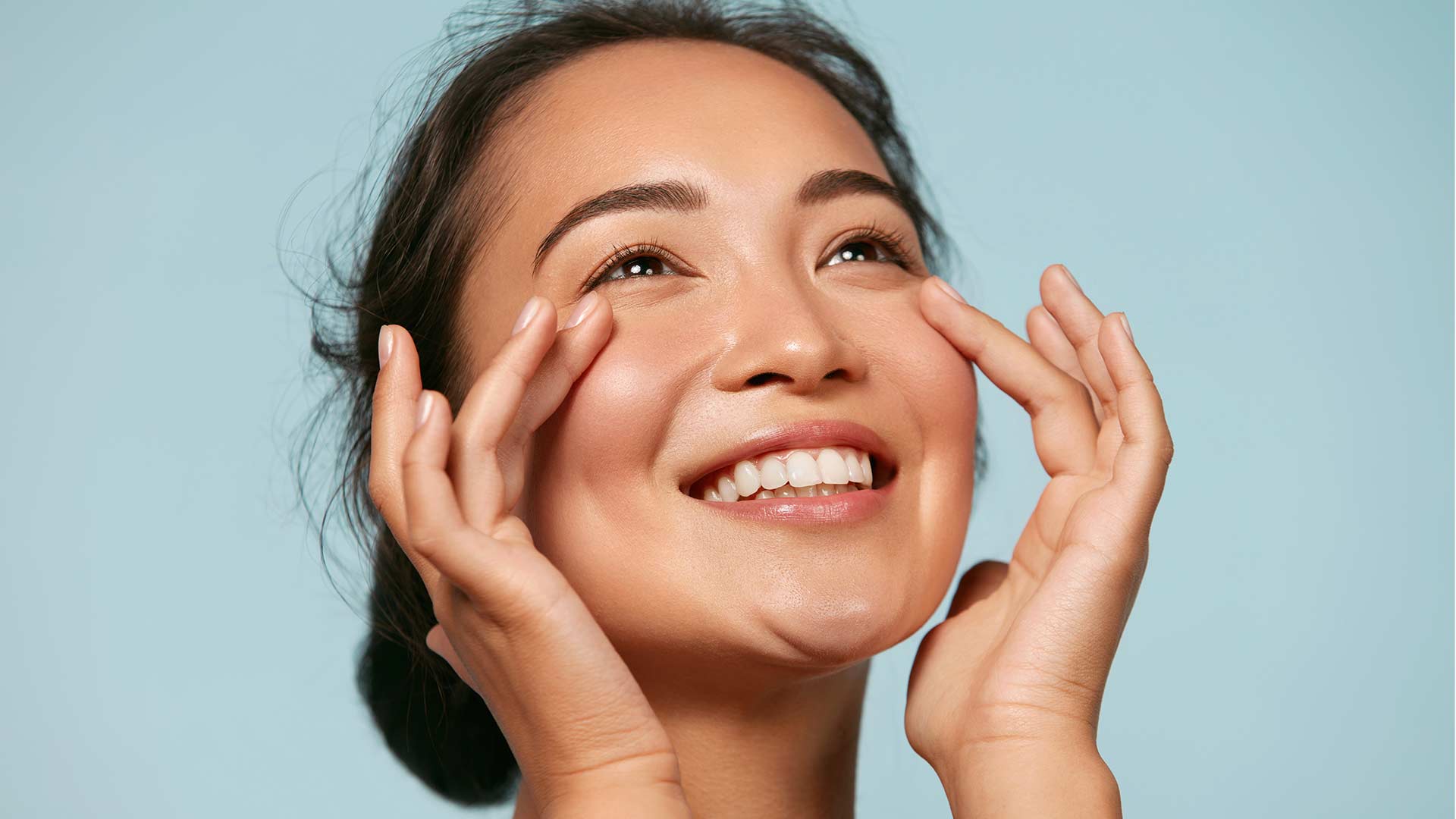Discover 7 examples of facial contouring to enhance your look. Learn practical tips and techniques to elevate your facial aesthetics today!
Facial contouring has become one of the most sought-after techniques for those looking to refine their appearance or subtly enhance their natural features. Some believe you need to completely change how you look to see results. But the real secret is far simpler and more sophisticated. A study in the Journal of Cutaneous and Aesthetic Surgery found that non-invasive contouring can dramatically transform overall facial perception with nothing but strategic light and shadow. There is an entire world of subtle artistry that can change everything you thought you knew about sculpting your face.
Table of Contents
- Understanding The Basics Of Facial Contouring
- The Power Of Highlighting In Contouring
- Using Shadows To Sculpt Your Face
- Common Products For Effective Contouring
- Techniques For Different Face Shapes
- Makeup Tools That Aid Facial Contouring
- Professional Contouring Options Available
Quick Summary
| Takeaway | Explanation |
|---|---|
| Understand facial anatomy for contouring | Knowing the facial structure aids in achieving balanced and harmonious features. Tailored approaches yield the best results based on individual geometry. |
| Use highlighting to enhance features | Highlighting brings dimension and luminosity by emphasizing specific facial points. This technique creates visual depth and enhances natural bone structure. |
| Choose appropriate products for contouring | Select products based on skin type and undertones for optimal blending and natural-looking results. Quality formulations ensure effective application and a refined finish. |
| Tailor techniques to face shapes | Different facial shapes require unique contouring methods for balanced enhancement. Customised strategies maximise the potential of each individual’s features. |
| Utilise professional tools for precision | Specialized makeup tools, like angled brushes and blending sponges, are essential for achieving seamless and intricate contouring results. Mastery of these tools enhances overall impact. |
1: Understanding the Basics of Facial Contouring
Facial contouring is a sophisticated aesthetic technique designed to enhance and refine an individual’s natural facial structure. This precision-driven approach involves strategic manipulation of facial features to create balance, symmetry, and visual harmony. Facial contouring transcends traditional makeup application, offering a more nuanced method of aesthetic enhancement.
At its core, facial contouring relies on understanding fundamental anatomical principles and individual facial characteristics. Practitioners assess unique facial geometry, bone structure, and skin texture to develop personalised transformation strategies. The goal is not to dramatically alter one’s appearance but to subtly accentuate natural beauty.
Key considerations for effective facial contouring include:
- Facial symmetry: Identifying and minimising asymmetrical features
- Skin tone and undertone: Selecting appropriate shading techniques
- Facial shape: Determining the most flattering contouring approach
Professional facial contouring techniques draw insights from professional aesthetic standards that emphasise precision and individualised treatment. These standards underscore the importance of comprehensive skin analysis and tailored application methods.
Successful facial contouring requires a delicate balance between technical skill and artistic interpretation. Practitioners must possess an intricate understanding of facial anatomy, light interaction, and aesthetic proportions. Read our comprehensive guide on facial harmonisation to explore how these techniques create transformative yet natural results.
The art of facial contouring continues to evolve, integrating advanced techniques that celebrate individual beauty while maintaining a refined, sophisticated approach to aesthetic enhancement.
2: The Power of Highlighting in Contouring
Highlighting represents a transformative technique in facial contouring, offering a sophisticated method to sculpt and illuminate facial features with remarkable precision. This nuanced approach goes beyond traditional makeup application, creating dimensional effects that enhance natural bone structure and bring luminosity to specific facial areas.
The art of highlighting involves strategically placing light-reflecting products to create visual depth and dimension. By understanding light interaction and skin characteristics, practitioners can manipulate facial perception through subtle luminescent techniques. Illumination points become critical in reshaping how facial features are visually interpreted.
Key highlighting strategies include:
- Cheekbone emphasis: Creating a lifted, radiant appearance
- Central facial illumination: Drawing attention to key structural elements
- Targeted light reflection: Minimising shadowed or uneven areas
Research from the University of Leeds reveals fascinating insights into how different light temperatures impact skin tone perception, underscoring the scientific complexity behind effective highlighting techniques.
Professional highlighting requires an intricate understanding of individual facial topography. Practitioners must assess skin undertones, facial geometry, and natural light interaction to develop personalised illumination strategies. Explore our comprehensive guide on facial harmonisation to understand how these techniques create subtle yet transformative results.
The technique demands precision, with application points carefully selected to enhance natural bone structure. Skilled practitioners use lightweight, highly reflective products that seamlessly blend with individual skin characteristics, creating a luminous effect that appears effortless and natural. Beyond aesthetic enhancement, highlighting represents an artistic interpretation of facial architecture, celebrating individual beauty through strategic illumination.
3: Using Shadows to Sculpt Your Face
Facial shadowing represents a sophisticated technique in aesthetic manipulation, transforming facial perception through strategic darkness placement. This advanced method allows practitioners to visually reshape facial structures by creating optical illusions that enhance or minimise specific features.
Shadow contouring operates on fundamental principles of light and visual perception. By carefully applying darker pigments to specific facial zones, skilled professionals can create depth, dimension, and apparent structural changes without invasive procedures. Shadow placement becomes a precise art form, requiring extensive understanding of facial anatomy and light interaction.
Key shadowing principles include:
- Depth creation: Generating visual dimension through strategic shading
- Feature minimisation: Softening prominent facial characteristics
- Structural redefinition: Subtly altering perceived facial geometry
Research published in the Journal of Cutaneous and Aesthetic Surgery demonstrates how non-invasive contouring techniques can dramatically transform facial appearance through nuanced shadowing approaches.
Check out our jawline contouring guide to understand how precise shadow techniques can dramatically enhance facial definition. The most effective shadowing techniques involve understanding individual facial topography, skin undertones, and natural bone structure.
Professional shadowing requires exceptional skill, with practitioners meticulously selecting product textures and application techniques. The goal transcends mere cosmetic application, focusing instead on creating harmonious visual balance that celebrates individual facial characteristics. Advanced practitioners employ lightweight, blendable products that interact naturally with skin, producing results that appear effortless and refined.
Ultimately, shadow contouring represents a transformative approach to facial aesthetics, offering sophisticated methods to sculpt and refine facial features with remarkable subtlety and precision.
4: Common Products for Effective Contouring
Facial contouring requires a carefully curated selection of professional-grade products designed to enhance and sculpt facial features with precision. Understanding product composition, texture, and application techniques becomes fundamental to achieving sophisticated aesthetic results.
Professional contouring products typically fall into several critical categories, each serving a unique purpose in facial transformation. Cream-based contour products offer seamless blending and natural finish, while powder formulations provide more defined, structured looks. Liquid contouring solutions enable incredibly precise application, allowing practitioners to create nuanced dimensional effects.
Key product considerations include:
- Pigment intensity: Selecting shades that complement natural skin undertones
- Texture compatibility: Matching product consistency with individual skin type
- Blendability: Ensuring smooth, undetectable application
According to UK government guidelines on cosmetic products, consumers must prioritise product safety and regulatory compliance when selecting facial contouring materials. Reputable brands invest extensively in formulation research, developing products that not only enhance aesthetic appearance but also maintain skin health.
Explore our jawline contouring guide to understand how specific product selections can dramatically improve facial definition. Professional-grade contouring products typically incorporate sophisticated ingredients like light-reflecting micropigments, hydrating compounds, and skin-conditioning agents.
Advanced practitioners recommend multi-dimensional product collections that offer gradient shading capabilities. These collections enable intricate layering techniques, allowing for highly personalised facial sculpting approaches. The most effective products provide buildable coverage, enabling users to control intensity and create customised aesthetic outcomes.
Ultimately, successful facial contouring transcends mere product selection, representing a delicate balance between technical skill, artistic interpretation, and sophisticated product understanding.
5: Techniques for Different Face Shapes
Facial contouring represents a nuanced art form that demands individualised approaches tailored to unique facial geometries. Each face shape requires specific techniques to enhance natural features, creating balanced and harmonious aesthetic results. Understanding the intricate relationship between facial structure and contouring strategies becomes paramount in achieving sophisticated visual transformations.
Professional practitioners recognize six primary facial shapes: oval, round, square, heart, diamond, and rectangular. Customised contouring techniques enable precise manipulation of visual perception, subtly enhancing or minimising specific facial characteristics through strategic product application and shading methods.
Key considerations for shape-specific contouring include:
- Bone structure analysis: Identifying dominant facial architectural elements
- Shadow and highlight placement: Tailoring techniques to individual facial topology
- Product selection: Choosing formulations that complement specific skin characteristics
Research published in aesthetic medicine demonstrates the critical importance of morphological understanding when developing personalised contouring strategies. Each facial shape demands a unique approach to achieve optimal aesthetic balance.
Learn more about enhancing your facial routine and discover how complementary techniques can further refine your contouring results. Professional aestheticians employ a holistic approach, considering factors beyond mere shape, including skin texture, undertone, and individual facial dynamics.
For instance, individuals with round faces benefit from techniques that visually elongate and slim facial contours, while those with angular square shapes might require softer, more rounded contouring approaches. The goal remains consistent: creating visual harmony that celebrates individual beauty while subtly enhancing natural facial architecture.
Mastering facial contouring demands more than technical skill. It requires an artistic sensibility, a deep understanding of human facial anatomy, and the ability to see beyond surface-level characteristics to reveal each person’s unique aesthetic potential.
6: Makeup Tools That Aid Facial Contouring
Professional makeup tools represent critical instruments in achieving precise facial contouring, transforming aesthetic techniques from basic application to sophisticated sculptural artistry. These specialised implements enable practitioners to create nuanced, dimensional effects that enhance natural facial architecture with remarkable precision.
The contemporary contouring toolkit encompasses a diverse range of specialised brushes, sponges, and applicators designed to deliver exceptional results. Precision instruments like angled brushes, beauty blenders, and silicone applicators provide unparalleled control over product placement, enabling seamless blending and intricate shading techniques.
Key makeup tools essential for effective contouring include:
- Angled contour brushes: Enabling precise edge definition and controlled product application
- Soft-edge blending sponges: Creating seamless, undetectable transitions between shades
- Dual-ended makeup tools: Offering versatility in application and touch-up techniques
Professional training programmes, such as those at Empire Beauty Schools, emphasise the critical importance of understanding tool functionality and technique in achieving superior aesthetic results.
Discover our recommended facial treatments to complement your contouring toolkit and enhance overall aesthetic outcomes. Professional-grade silicone applicators and high-density synthetic brushes have revolutionised product application, allowing for unprecedented control and precision.
Advanced makeup artists recognise that tool selection goes beyond mere functionality. The ideal contouring toolkit represents an extension of artistic expression, with each instrument carefully chosen to address specific skin textures, facial geometries, and aesthetic objectives.
Ultimately, mastering facial contouring requires not just technical skill, but an intuitive understanding of how specialised tools can transform basic makeup application into a sophisticated form of personal artistic expression.
7: Professional Contouring Options Available
Professional facial contouring represents a sophisticated spectrum of aesthetic interventions, ranging from non-invasive techniques to advanced surgical procedures. Modern practitioners offer tailored solutions that address individual aesthetic goals with unprecedented precision and personalisation.
The contemporary aesthetic landscape provides multiple professional contouring approaches, each designed to enhance natural facial architecture through targeted interventions. Minimally invasive treatments have revolutionised facial aesthetic medicine, offering patients refined transformation opportunities with reduced recovery times and minimal discomfort.
Key professional contouring options include:
- Injectable dermal fillers: Providing immediate volume and structural enhancement
- Botulinum toxin treatments: Refining facial muscular dynamics
- Non-surgical thread lifting: Creating subtle facial lifting and contouring effects
According to recent research from the Royal Society of Medicine, cutting-edge aesthetic treatments now encompass advanced techniques like helium plasma submental contouring and platelet-rich plasma rejuvenation.
Explore our comprehensive facial treatment options to understand the transformative potential of professional aesthetic interventions. Skilled practitioners assess individual facial characteristics, recommending bespoke treatment plans that harmonise technical precision with artistic sensibility.
Surgical options like facial implants and structural fat grafting offer more permanent solutions for individuals seeking significant facial reshaping. These procedures require extensive consultation, precise anatomical understanding, and a nuanced approach to facial aesthetics.
Ultimately, professional contouring transcends mere physical transformation. It represents a collaborative journey between practitioner and patient, celebrating individual beauty through sophisticated, personalised aesthetic interventions that enhance natural features with remarkable subtlety and grace.
Bring Out Your Best with Expert Facial Contouring at Monaz Clinic
Are you inspired by the transformative power of facial contouring but unsure where to begin for results that look and feel natural? This article reveals how techniques like professional highlighting and precision contouring can reshape your features with subtlety, but translating this knowledge into practice is not always straightforward. Many women worry about achieving balance, symmetry, and harmony on their own. At Monaz Clinic, we understand the importance of tailored facial treatments that respect your uniqueness. Our tips and insights can help you navigate your options with confidence.
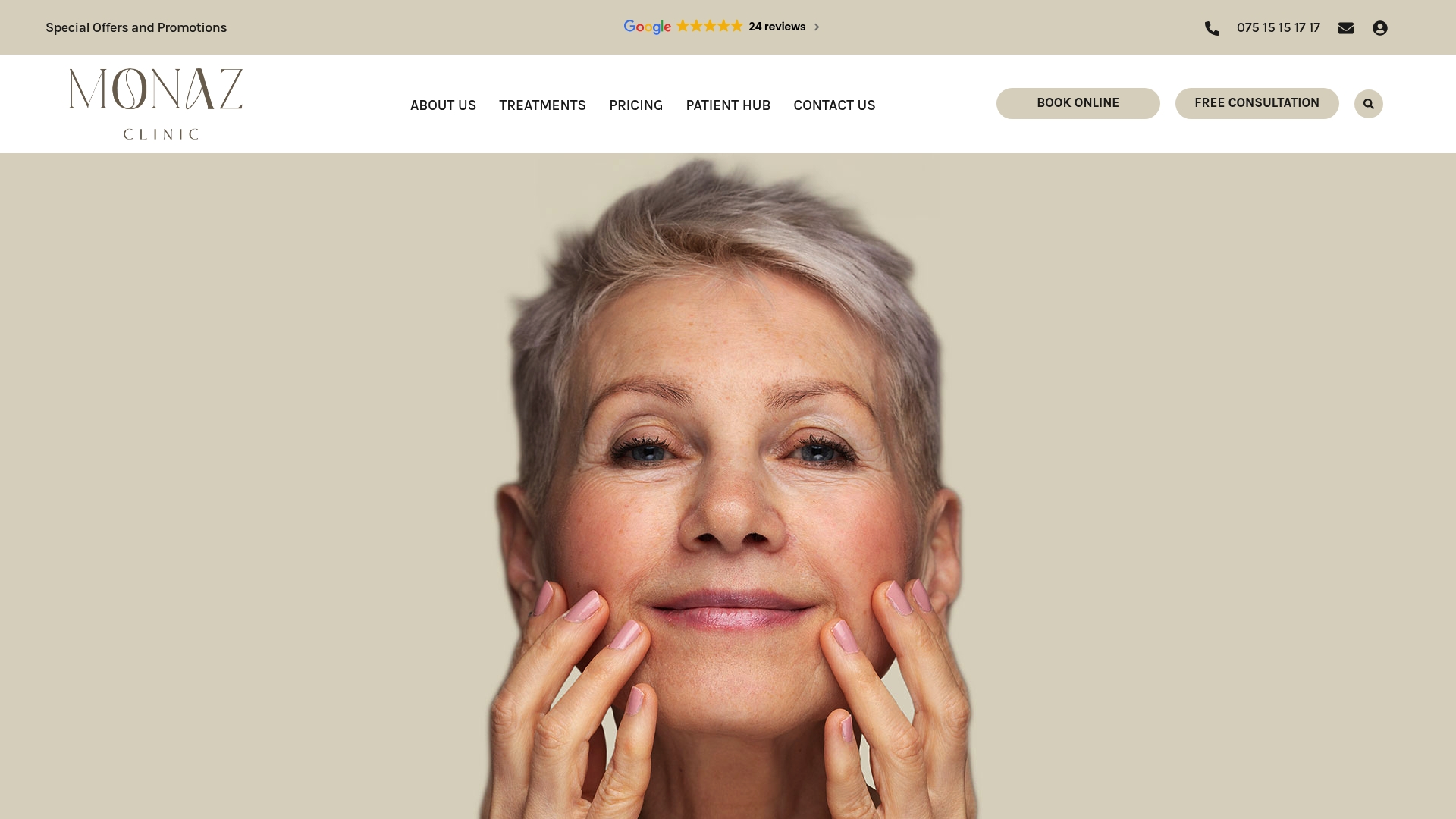
Experience the difference of true expertise on Harley Street. Book your complimentary consultation at Monaz Clinic today to discover how medically guided, non-surgical treatments can bring your facial contouring goals to life. Our one-on-one approach, award-winning products, and commitment to authenticity ensure you achieve beautiful yet believable results. Take your next step and uncover more solutions designed especially for women ready to reveal their best self. Now is the perfect time to feel more confident in your own skin.
Below is a comprehensive table summarising the main concepts, key techniques, products, tools, and professional approaches discussed in the article on facial contouring.
| Topic | Key Points | Benefits/Outcomes |
|---|---|---|
| Understanding Facial Contouring | Focuses on analysing facial anatomy, symmetry, and individual characteristics for tailored contouring | Achieves natural, harmonious enhancement of features |
| Highlighting Techniques | Involves precise placement of light-reflecting products to accentuate bone structure and illuminate the skin | Brings dimension, radiance, and visual lift to features |
| Shadow Sculpting | Utilises darker pigments to define, minimise, or enhance facial areas | Creates depth, refines facial contours, enhances structure |
| Product Selection | Emphasises using suitable creams, powders, or liquids based on skin type and undertones | Ensures optimal blending and achieves a refined finish |
| Approaches for Face Shapes | Tailors contouring strategies for oval, round, square, heart, diamond, and rectangular faces | Delivers balanced, individualised results |
| Essential Makeup Tools | Employs angled brushes, blending sponges, and precise applicators | Enables seamless application and detailed sculpting |
| Professional Contouring Options | Includes dermal fillers, botulinum toxin, thread lifting, and surgical procedures | Offers advanced, longer-lasting or permanent solutions |
Frequently Asked Questions
What are the key principles of facial contouring?
Facial contouring relies on understanding facial symmetry, individual bone structure, and skin tone. This involves strategically applying shadows and highlights to enhance or minimise features, creating balance and visual harmony.
How can I choose the right contouring products for my skin type?
Select contouring products based on your skin’s undertone and texture. Cream products work well for dry skin, while powders may be better for oily skin. Always consider the pigment intensity to ensure a natural look.
What techniques are effective for different face shapes in contouring?
Each face shape requires specific contouring techniques. For example, round faces benefit from techniques that elongate the face, while square faces might require softer contours to round out sharp angles. Tailoring the approach is essential for achieving optimal results.
Can professional contouring techniques provide long-lasting effects?
Yes, professional contouring options, including injectable fillers and non-surgical treatments like thread lifting, can provide longer-lasting results compared to traditional makeup techniques. These methods enhance facial features with more permanent solutions while requiring less daily maintenance.
